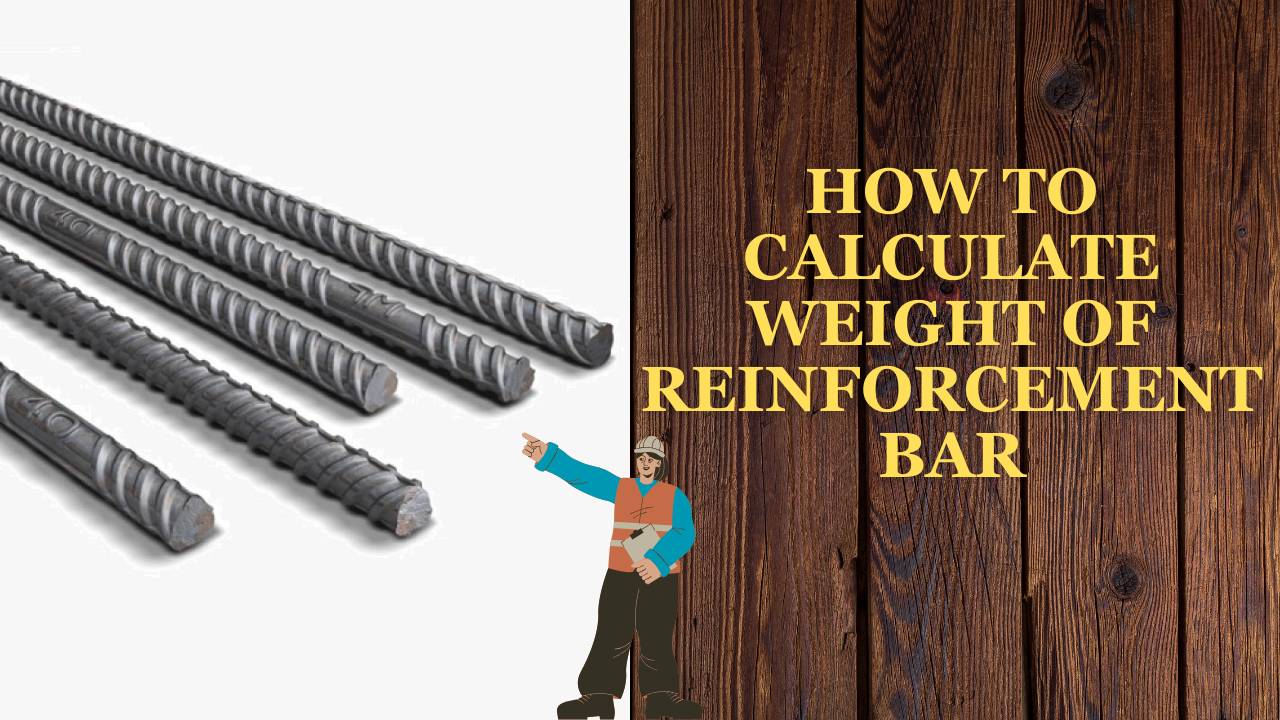How to Calculate Weight of Reinforcement Bar
Table of Contents
Introduction
Calculate weight of reinforcement bars per running meter is an essential skill for engineers and construction professionals. It allows for accurate estimation of material requirements, cost calculations, and ensuring structural integrity. In this blog post, we will discuss the step-by-step process of calculating the weight of reinforcement bars per running meter.

Step 1: Identify the Type of Reinforcement Bar
The first step is to identify the type of reinforcement bar you are working with. Common types include mild steel bars (MS bars) and high-strength deformed bars (HSD bars). Each type has different properties and weight per meter.
Step 2: Measure the Length of the Bar
Using a measuring tape, measure the length of the reinforcement bar in meters. Make sure to measure accurately to get precise calculations.
Step 3: Determine the Diameter of the Bar
Next, determine the diameter of the reinforcement bar. This information is usually provided by the manufacturer or can be measured using a caliper. The diameter will be required for the weight calculation formula.
Step 4: Calculate the Cross-Sectional Area
To calculate the weight of the reinforcement bar, we need to determine its cross-sectional area. The formula for calculating the cross-sectional area of a round bar is:
\[ \text{Area} = \frac{\pi}{4} \cdot \text{diameter}^2 \]
Step 5: Calculate the Weight
To calculate the weight of reinforcement bars, you’ll need to know the following parameters:
- Length of the Bar (L): Measure the length of the reinforcement bar in meters or feet.
- Diameter of the Bar (D): Measure the diameter of the bar in millimeters or inches.
- Density of the Material (ρ): The density of steel, which is commonly used for reinforcement bars, is typically around 7850 kilograms per cubic meter (kg/m³) or 0.00785 grams per cubic millimeter (g/mm³).
With these parameters, you can use the following formula to calculate the weight of the reinforcement bar:
\[ W = \frac{\pi D^2 L \rho}{4} \]
- Here’s a step-by-step guide on how to calculate the weight of a reinforcement bar:
- Measure the Length (L) of the bar in meters or feet and convert it to meters if necessary.
- Measure the Diameter (D) of the bar in millimeters or inches and convert it to millimeters if necessary.
- Convert the density of steel to the appropriate units if it’s not already in the required units. For example, if the density is given in grams per cubic millimeter (g/mm³), convert it to kilograms per cubic meter (kg/m³) by multiplying by 1000.
- Put the values into the formula:
\[ W = \frac{\pi D^2 L \rho}{4} \]
Where:
– π is the mathematical constant Pi (approximately 3.14159).
– D is the diameter of the bar in meters (converted from millimeters).
– L is the length of the bar in meters.
– ρ is the density of the material in kg/m³.
- Calculate the weight using the formula. The result will be in kilograms (kg) or another unit based on the density unit you used.
For example, let’s say you have a reinforcement bar with a length of 6 meters and a diameter of 16 millimeters, and you’re using the density of steel, which is 7850 kg/m³:
D = 16 mm = 0.016 meters (converted to meters)
L = 6 meters
ρ = 7850 kg/m³
\[ W = \frac{\pi \cdot (0.016)^2 \cdot 6 \cdot 7850}{4} \]
Weight \( (W) \approx 9.470 \, \text{kilograms} \) (rounded to three decimal places)
So, the weight of this particular reinforcement bar is approximately 9.470 kilograms.
Conclusion
Calculating the weight of reinforcement bars per running meter is a crucial skill in the field of construction. By following the steps outlined in this blog post, you can accurately estimate the weight of reinforcement bars, ensuring the structural integrity and cost-effectiveness of your projects.
FAQ: How to Calculate Weight of Reinforcement Bar
Q: What is the importance of calculating the weight of reinforcement bars?
A: Calculating the weight of reinforcement bars is crucial in construction to determine the quantity of material needed and ensure the structural integrity of the project.
Q: How do I calculate the weight of a reinforcement bar?
A: The weight of a reinforcement bar can be calculated using the formula: Weight = Volume × Density. The volume is determined by the formula for the area of a circle (πr²) multiplied by the length of the bar.
Q: What are the units used for calculating the weight of reinforcement bars?
A: The weight is commonly expressed in kilograms (kg) or pounds (lb), the volume in cubic centimeters (cm³) or cubic inches (in³), and the density in kilograms per cubic centimeter (kg/cm³) or pounds per cubic inch (lb/in³).
Q: What is the density of a typical reinforcement bar?
A: The density of reinforcement bars typically ranges from 7.85 g/cm³ to 7.87 g/cm³, depending on the type of steel used.
Q: Can I use the same formula for different shapes of reinforcement bars?
A: The formula provided is specific to cylindrical bars. For other shapes, such as rectangular or square bars, different formulas are required to calculate their volume.
Q: How do I measure the length of a reinforcement bar for the calculation?
A: Measure the length of the reinforcement bar using a measuring tape or a calibrated length measuring tool. Ensure accurate measurements for precise calculations.
Q: Are there standard dimensions for reinforcement bars?
A: Yes, reinforcement bars come in standard lengths and diameters. Common diameters include 6mm, 8mm, 10mm, 12mm, 16mm, and 20mm, with standard lengths of 12 meters or as specified by project requirements.
Q: Can I use the weight calculation for estimating material costs?
A: Yes, calculating the weight of reinforcement bars is often used to estimate material costs, which is essential for budgeting in construction projects.
Q: Are there online tools available for calculating the weight of reinforcement bars?
A: Yes, there are various online calculators that can help you determine the weight of reinforcement bars by inputting the necessary dimensions.
Q: How does temperature affect the weight calculation of reinforcement bars?
A: The density of steel can be affected by temperature variations. It is advisable to use the appropriate density value corresponding to the temperature conditions during the calculation.
Q: Can I use the weight calculation for any type of steel reinforcement bar?
A: Yes, the formula can be applied to different types of steel reinforcement bars, but it’s essential to use the correct density value for the specific type of steel being used.
Q: Why is it important to be accurate in weight calculations for reinforcement bars?
A: Accuracy is crucial to ensure that the structure meets safety standards and that the right amount of material is ordered, minimizing wastage and cost overruns.
Q: What precautions should I take when measuring and calculating the weight of reinforcement bars?
A: Ensure precise measurements, use the correct density values, and double-check calculations to avoid errors that could impact the structural integrity of the project.
Q: How often should weight calculations be performed during a construction project?
A: Weight calculations should be performed whenever there is a change in the design, as well as during regular checks to ensure that construction stays within the planned parameters.
Q: Can I calculate the weight of reinforcement bars manually, or is software recommended?
A: While manual calculations are possible, using specialized software or online calculators can streamline the process and reduce the likelihood of errors.








